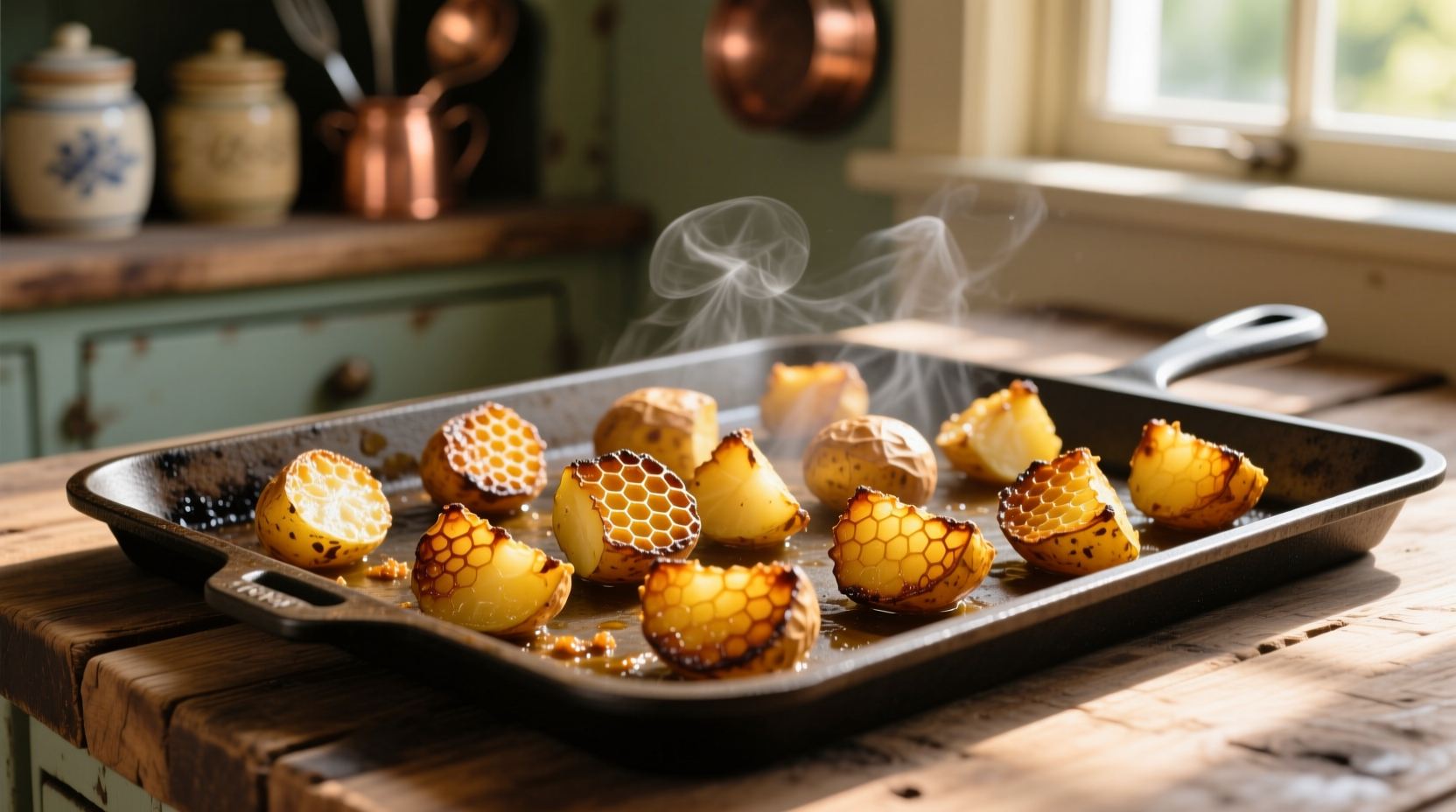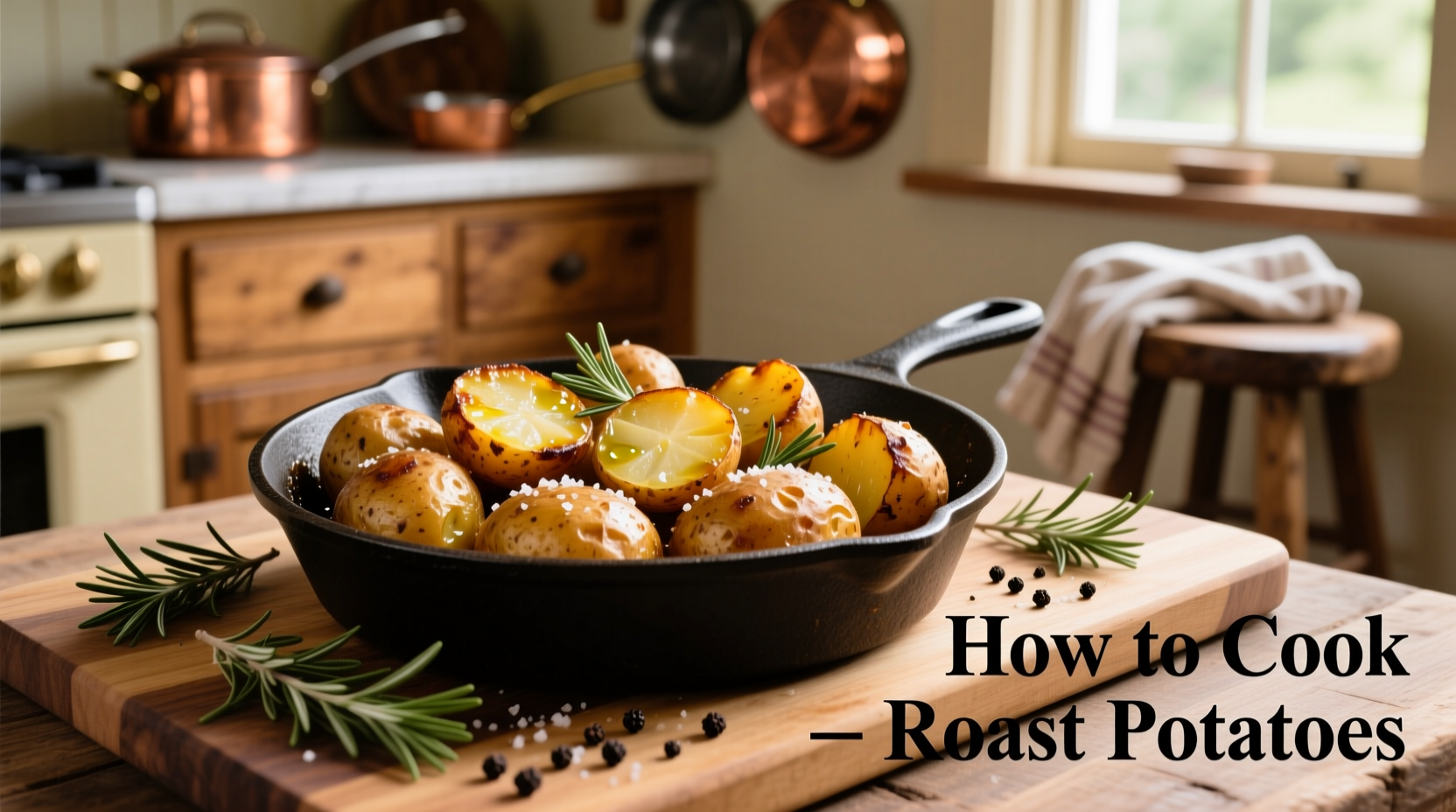The Science Behind Perfect Roast Potatoes
Roast potatoes seem simple, but achieving that ideal crispy exterior with a light, fluffy interior requires understanding food chemistry. When potatoes hit hot fat, the Maillard reaction creates complex flavors while the high heat transforms the surface starch into a glassy, crisp layer. The interior starch granules absorb moisture during parboiling, then expand during roasting for that signature fluffy texture.
Essential Ingredients & Equipment Checklist
Before starting, gather these items to ensure success:
- Potatoes: Maris Piper, Russet, or Yukon Gold (starchy varieties)
- Fat: Duck fat, goose fat, or high-smoke point oil like avocado oil
- Seasoning: Coarse sea salt, freshly ground black pepper
- Equipment: Heavy roasting pan, slotted spoon, kitchen thermometer

Step-by-Step Cooking Process
1. Potato Preparation (The Critical First Step)
Cut potatoes into uniform 5cm (2-inch) chunks with angled edges - these create more surface area for crispiness. Place in cold water immediately to prevent browning. Never skip this step: parboil for exactly 8 minutes in salted water with 1 tablespoon of baking soda. The baking soda raises the pH, breaking down the surface starch for maximum crisp potential. Drain thoroughly and shake the colander vigorously to create a 'fuzzy' exterior that crisps beautifully.
2. Fat Temperature Matters Most
Preheat your fat in the roasting pan at 200°C (400°F) for 10 minutes - this is non-negotiable. The fat must be shimmering but not smoking. Use enough to coat the bottom of your pan (about 3 tablespoons per pound of potatoes). When adding potatoes, they should sizzle immediately. This initial high heat creates the foundation for crispiness.
| Fat Type | Smoke Point | Flavor Profile | Best For |
|---|---|---|---|
| Duck Fat | 190°C (375°F) | Rich, savory | Traditional roast potatoes |
| Avocado Oil | 271°C (520°F) | Neutral | High-heat roasting |
| Goose Fat | 190°C (375°F) | Delicate, buttery | Elegant presentations |
| Vegetable Oil | 204°C (400°F) | Mild | Everyday cooking |
3. The Roasting Technique That Makes All the Difference
Carefully add potatoes to the hot fat, seasoning immediately with salt and pepper. Roast undisturbed for 20 minutes, then turn each potato individually using tongs to expose all surfaces. Rotate the pan halfway through cooking for even browning. After 35 minutes, test for crispness by gently scraping with a fork - it should meet resistance. Total cooking time is typically 45-55 minutes. For extra crunch, increase heat to 220°C (425°F) for the final 5 minutes.
Pro Chef Secrets Most Home Cooks Miss
Professional kitchens use three techniques rarely mentioned in home recipes:
- The Double Parboil Method: Briefly boil potatoes, cool completely, then re-boil for 3 minutes before roasting. This creates an extra-starchy surface.
- Fat Temperature Monitoring: Maintain oil between 180-200°C (350-400°F) using a thermometer - too cool makes soggy potatoes, too hot burns them.
- Resting Before Serving: Let potatoes rest 5 minutes after roasting; this allows steam to escape, preserving crispness.
Historical Evolution of Roast Potatoes
What we now consider classic roast potatoes evolved significantly over time. In the 19th century, potatoes were simply boiled and served alongside roasted meats. The modern crispy version emerged in the 1950s when home ovens became powerful enough to maintain high temperatures consistently. Food historian Dr. John Gregory documented in British Food Through the Ages how the introduction of convection ovens in the 1980s revolutionized home cooking techniques, making restaurant-quality crispness achievable in domestic kitchens. The Royal Society of Chemistry even published research in 2016 analyzing the perfect roast potato method, confirming the importance of the 'fuzzy' parboiled surface.
Common Mistakes That Ruin Roast Potatoes
Avoid these pitfalls that turn potential perfection into disappointment:
- Using waxy potatoes: Varieties like Red Bliss won't develop the same fluffy interior
- Skipping the parboil step: Essential for creating the starch structure needed for crispness
- Crowding the pan: Causes steaming instead of roasting - use multiple pans if needed
- Turning too frequently: Interrupts the crisping process - turn only twice during cooking
- Adding cold potatoes to cold fat: The pan and fat must be preheated for immediate sizzling
Variations for Different Dietary Needs
Adapt this classic technique for various preferences while maintaining crisp perfection:
- Herb-Infused: Add rosemary and thyme sprigs during the last 20 minutes of roasting
- Garlic Lover's: Toss with whole roasted garlic cloves (not minced, which burns)
- Vegan Version: Use refined coconut oil (204°C/400°F smoke point) instead of animal fats
- Spiced: Toss with smoked paprika and cumin before the final roasting stage
Storage and Reheating Guidelines
While roast potatoes are best served immediately, proper storage maintains quality:
- Cool completely on a wire rack before storing to prevent steam buildup
- Store in an airtight container in the refrigerator for up to 3 days
- Reheat in a 200°C (400°F) oven for 10-15 minutes - never microwave
- For best results, place on a wire rack over a baking sheet during reheating
Food safety note: Potatoes left at room temperature for more than 2 hours can develop harmful bacteria. Always refrigerate leftovers promptly as recommended by the USDA Food Safety and Inspection Service.











 浙公网安备
33010002000092号
浙公网安备
33010002000092号 浙B2-20120091-4
浙B2-20120091-4